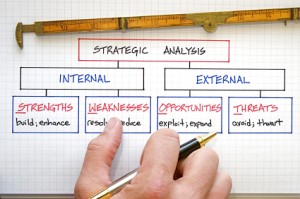When most organizations think about their value proposition, they think about the tangible benefits that the organization offers or how much better they are in a certain area versus the competition. It might even include their history, technical expertise, latest technology, commitment to customers, etc. 
In the book, Strategy from the Outside In: Profiting from Customer Value the authors describe their variation of a value proposition:
We prefer a third variant that we see in use among customer value leaders. A customer value leader bases its value proposition on a resonating theme – a few elements where the firm is distinctly better than the competition that really to a target market. An effective value proposition offers superior performance, price or relational value and communicates that value in a way that shows that it has a deep appreciation of the customer’s value priorities. The choice of value proposition is also the choice of target customer segment – and vice versa
This variation though more customer centric stops short of describing the experience the customer will have with the company. One of the interesting things about Agile Project Management is that you start with creating a user story. Work is expressed in the backlog as user stories. A team may write its user stories in a number of ways as long as they are written from the perspective of the end user. Put another way, team members are encouraged to think of their work from the perspective of who will use it, hence “user” story.
In building a value proposition, how many times do you start with a customer/prospect telling you how they use or will use the product or service? I know we interview people or perform won/loss analysis, but I wanted to go an additional step. What if we would paint the picture of how a user experiences your product or service? If we would take the time to determine that reaction, would we not create a better value proposition?
I think it might be interesting to define your entire business and your target business through customer experiences. Actually, cataloging the various experiences a customer will have with an organization is a needed exercise to enhance the value of the total experience for its customers.
Interesting Side Note: Joseph B. Pine II and James H. Gilmore, in their book The Experience Economy: Work Is Theater & Every Business a Stage, put forth a interesting statement that creates an interesting value proposition on how a customer may interpret your organization by how you charge for your product or service:
- If you charge for Stuff, then you are in the commodity business.
- If you charge for tangible things, then you are in the goods business.
- If you charge for the activities you execute, then you are in the service business.
- If you charge for the time customers spend with you, then you are in the experience business.
- If you charge for the demonstrated outcome the customer achieves, then and only then are you in the transformation business
Related Posts:
Agile Marketing – Maybe?
Start your Marketing with a User Story
Digging deeper with User Stories
Using Stories to explain your Marketing Efforts
User Stories Applied: For Agile Software Development
evaluate your Customer Needs
Receiving Better Response Rates thru Agile
